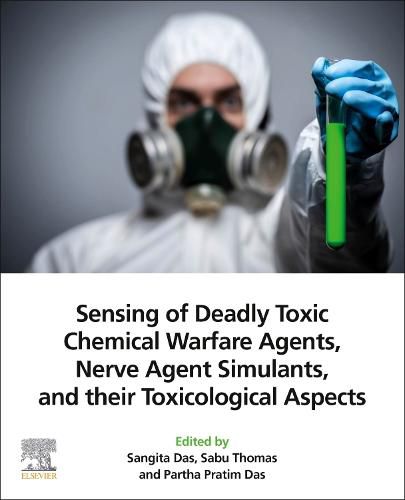Readings Newsletter
Become a Readings Member to make your shopping experience even easier.
Sign in or sign up for free!
You’re not far away from qualifying for FREE standard shipping within Australia
You’ve qualified for FREE standard shipping within Australia
The cart is loading…






Sensing of Deadly Toxic Chemical Warfare Agents, Nerve Agent Simulants, and their Toxicological Aspects provides a general overview of the development and performance of different novel molecular frameworks as potent vehicles for sensing Chemical Weapons (CWs). The chapters are contributed by leading researchers in the areas of materials science, medical science, chemical science, and nanotechnology from industries, academics, government and private research institutions across the globe. It covers cover topics such as inorganic nanocomposites, hyperbranched polymers, and graphene heterojunctions for effective sensing of CW agents. This book is a highly valuable reference source for graduates, post-graduates, and research scholars primarily in the fields of materials science, medicinal chemistry, organic chemistry, and nanoscience and nanotechnology. In addition, almost all analytical techniques will be discussed, making this a first-rate reference for professors, students, and scientists in many industries.
$9.00 standard shipping within Australia
FREE standard shipping within Australia for orders over $100.00
Express & International shipping calculated at checkout
Sensing of Deadly Toxic Chemical Warfare Agents, Nerve Agent Simulants, and their Toxicological Aspects provides a general overview of the development and performance of different novel molecular frameworks as potent vehicles for sensing Chemical Weapons (CWs). The chapters are contributed by leading researchers in the areas of materials science, medical science, chemical science, and nanotechnology from industries, academics, government and private research institutions across the globe. It covers cover topics such as inorganic nanocomposites, hyperbranched polymers, and graphene heterojunctions for effective sensing of CW agents. This book is a highly valuable reference source for graduates, post-graduates, and research scholars primarily in the fields of materials science, medicinal chemistry, organic chemistry, and nanoscience and nanotechnology. In addition, almost all analytical techniques will be discussed, making this a first-rate reference for professors, students, and scientists in many industries.